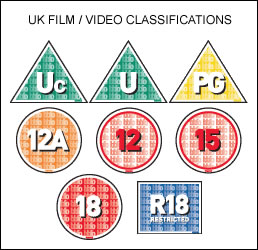Objectives : To be able to identify the purpose of credits within a film.
Learning Outcomes:
ALL: Will be able to describe the purpose of the opening credits. E
MOST: Will be able to analyse how the credits are used with appropriate examples. C
SOME: Will be able to create their own credits for their thriller film. A
Generally the term refers to all individuals responsible for the aspects such as the technical areas, hair and make up, directors and producers ect. All having some responsibility or role in the making of the film.
- Actors/ Actresses: Those who have acted within the film are noted, sometimes alongside their character name. Most commonly the most known or popular celebrity or the main character is noted first following the rest of the cast.
- Studio distrbutions : Bigger companies such as DreamWorks, distribute in the making of many films. They are also credited at the beginning of films.
- The production team consist of those who have had some input of the making of the film.
ALL: Will be able to describe the purpose of the opening credits. E
MOST: Will be able to analyse how the credits are used with appropriate examples. C
SOME: Will be able to create their own credits for their thriller film. A
Generally the term refers to all individuals responsible for the aspects such as the technical areas, hair and make up, directors and producers ect. All having some responsibility or role in the making of the film.
- Actors/ Actresses: Those who have acted within the film are noted, sometimes alongside their character name. Most commonly the most known or popular celebrity or the main character is noted first following the rest of the cast.
- Studio distrbutions : Bigger companies such as DreamWorks, distribute in the making of many films. They are also credited at the beginning of films.
Opening Credit:
The purpose of opening credits in a film is to show at the beginning of a film a list the most important members of the production/ actors and actresses/ sponsors and companies involved with the making of the film. The text can be superimposed on a blank screen or static pictures, or sometimes on top of action in the show. Some opening credits are built around animation or production of some sort. Opening credits usually only mention the major actors, guest stars, producers and director, as opposed to closing
credits which lists the entire production crew.
- The production team consist of those who have had some input of the making of the film.
The opening credits are important in regards to recognition of both the actors and those who have contributed to the making of the film, the way in which these are displayed can indicate the genre of the film before it even begins. The uses of font and colour can determined and develop the conventions of a thriller genre, such as in these two clips.
Film openings, such as 'Se7en' and 'Panic Room'. Had a very similar order that members of the film production team and cast are displayed in. I discovered that it is mainly as follows;
The production company and their logo.
The directors name.
The main characters of the film.
The co-stars.
Other members of the filming team (Editors, cameraman, hair and makeup artists (Production designer).
The introduction to the film first shows an introduction to its sponsors ‘ Liongate ‘ and ‘ Twisted Pictures’ the animated effects relate to a thriller like genre, the deep red clouds and barbed wire both represent this by use of colour and effect. The credits themselves have a ghost like edit, where they fade in and out in a transparent white font.
The style of the opening credits can determine the genre. In the opening sequence of ‘Se7en’ s font style of the credits look as if they are etched in, such as in Gothic text. The colour is white and contrasts with the darker background.
This is affective as the font is placed over the action of the film, it consists of the conventions of a thriller as it creates a creepy effect. The order of the appearance starts with the producer of the film as well as the creator, following the main/ most famous actors in the play such as Brad Pitt and Morgan Freeman.
Relation To My Own Thriller Film :
This is affective as the font is placed over the action of the film, it consists of the conventions of a thriller as it creates a creepy effect. The order of the appearance starts with the producer of the film as well as the creator, following the main/ most famous actors in the play such as Brad Pitt and Morgan Freeman.
Relation To My Own Thriller Film :
I have created this font style for my group’s potential opening credits. i have chosen to do this style mainly because of the colouring is very dark based such as a typical thriller. I wanted to keep it the typical conventions of a thriller so it is immediately obvious of the genre. The writing font is etched it similar to se7en slightly, its a sharp edge as in done with a razor or knife, which connects to the narrative of our film. I also like the ghostly effect that Saw’s credits do , the wipe out effective make it fairly chilling, so i added a dark glow on the outline of the font text.


























